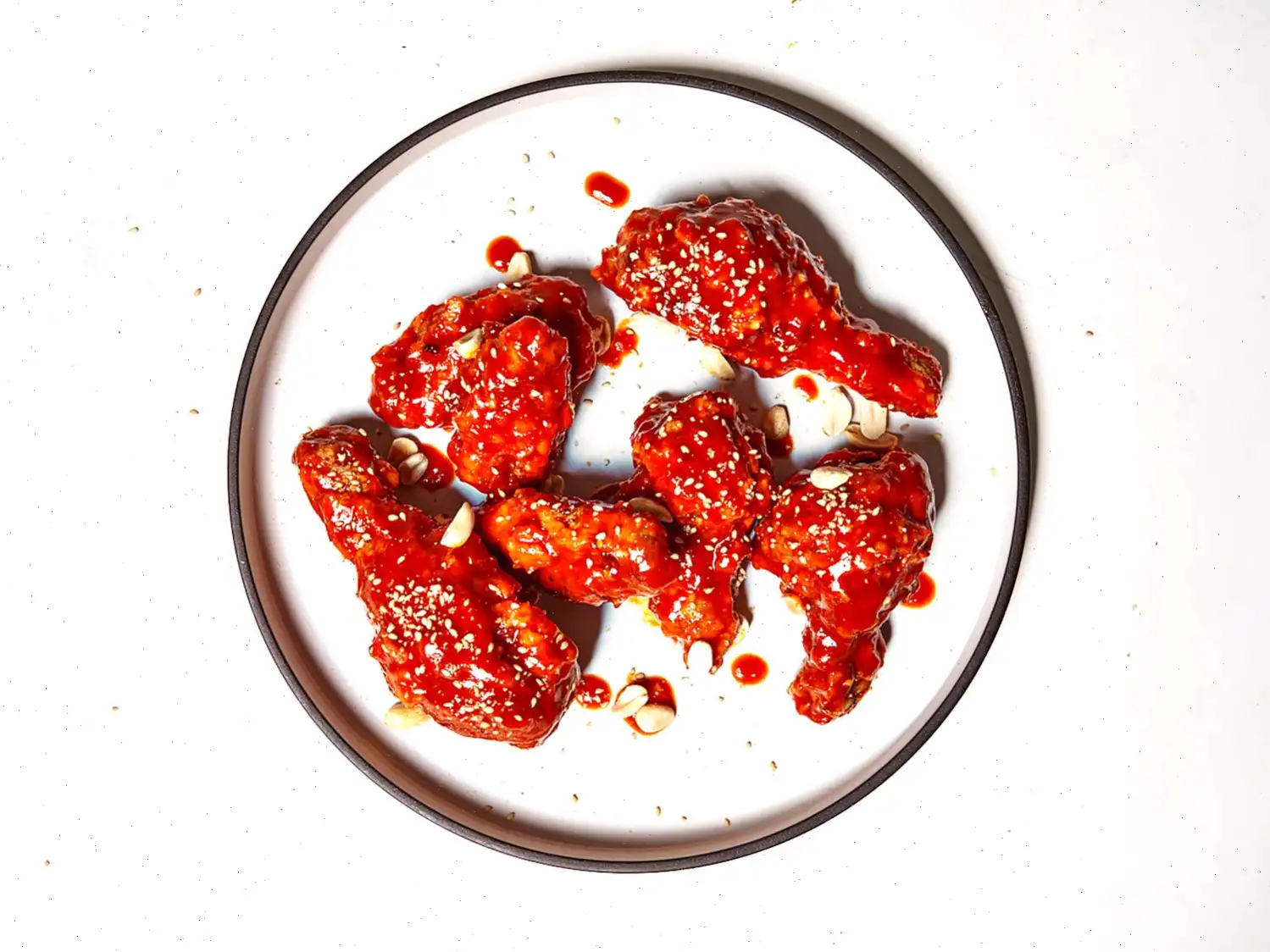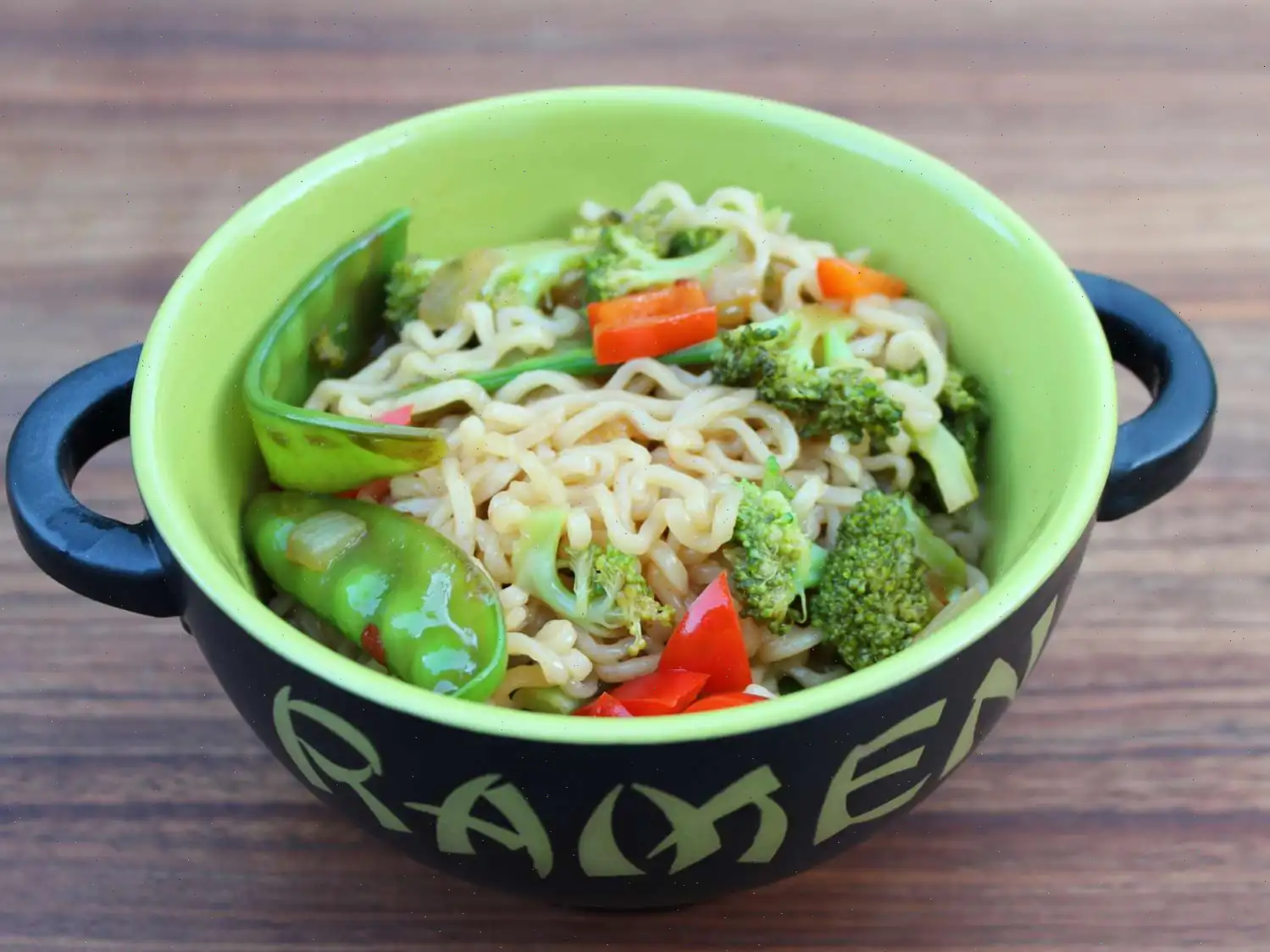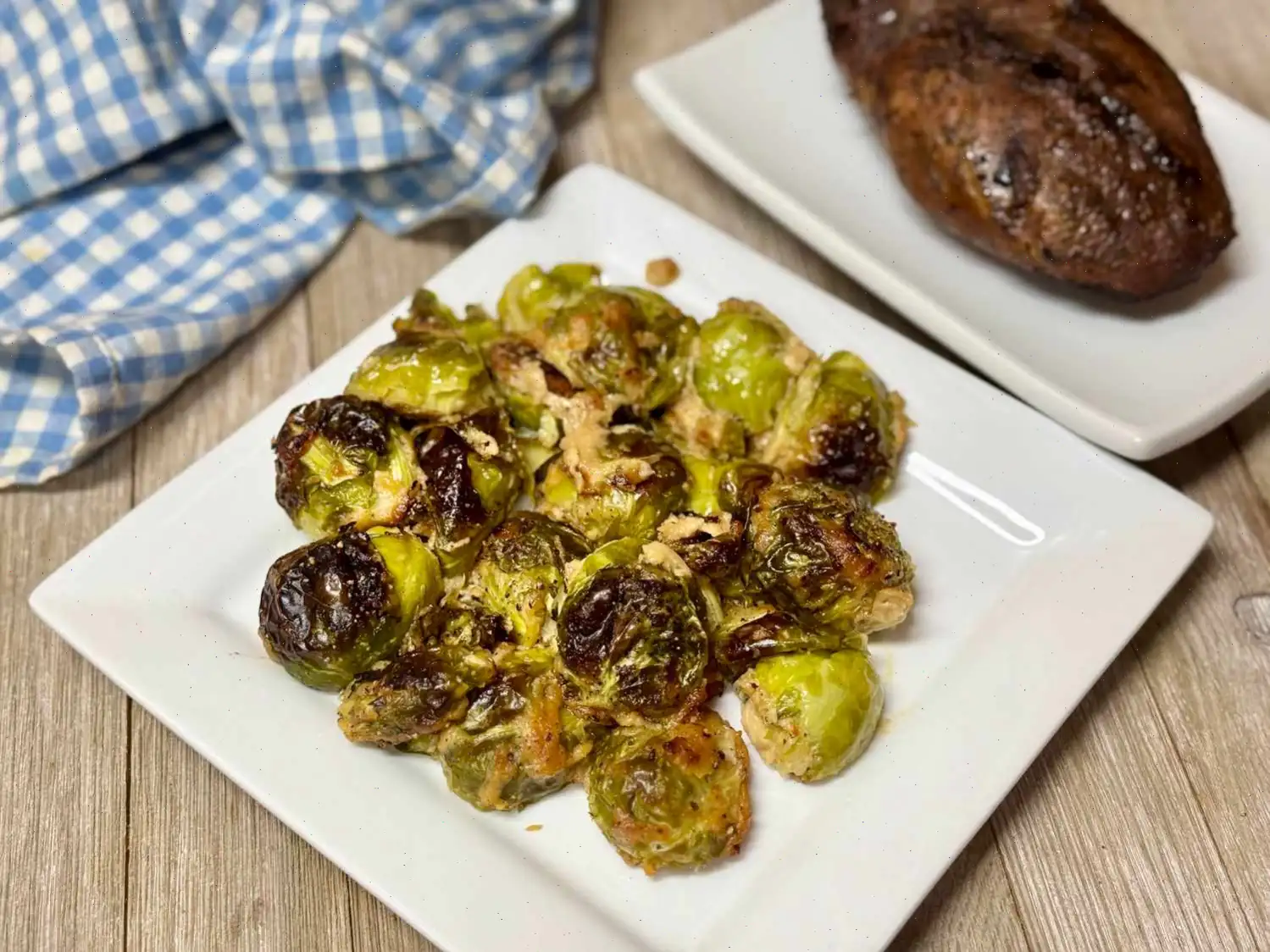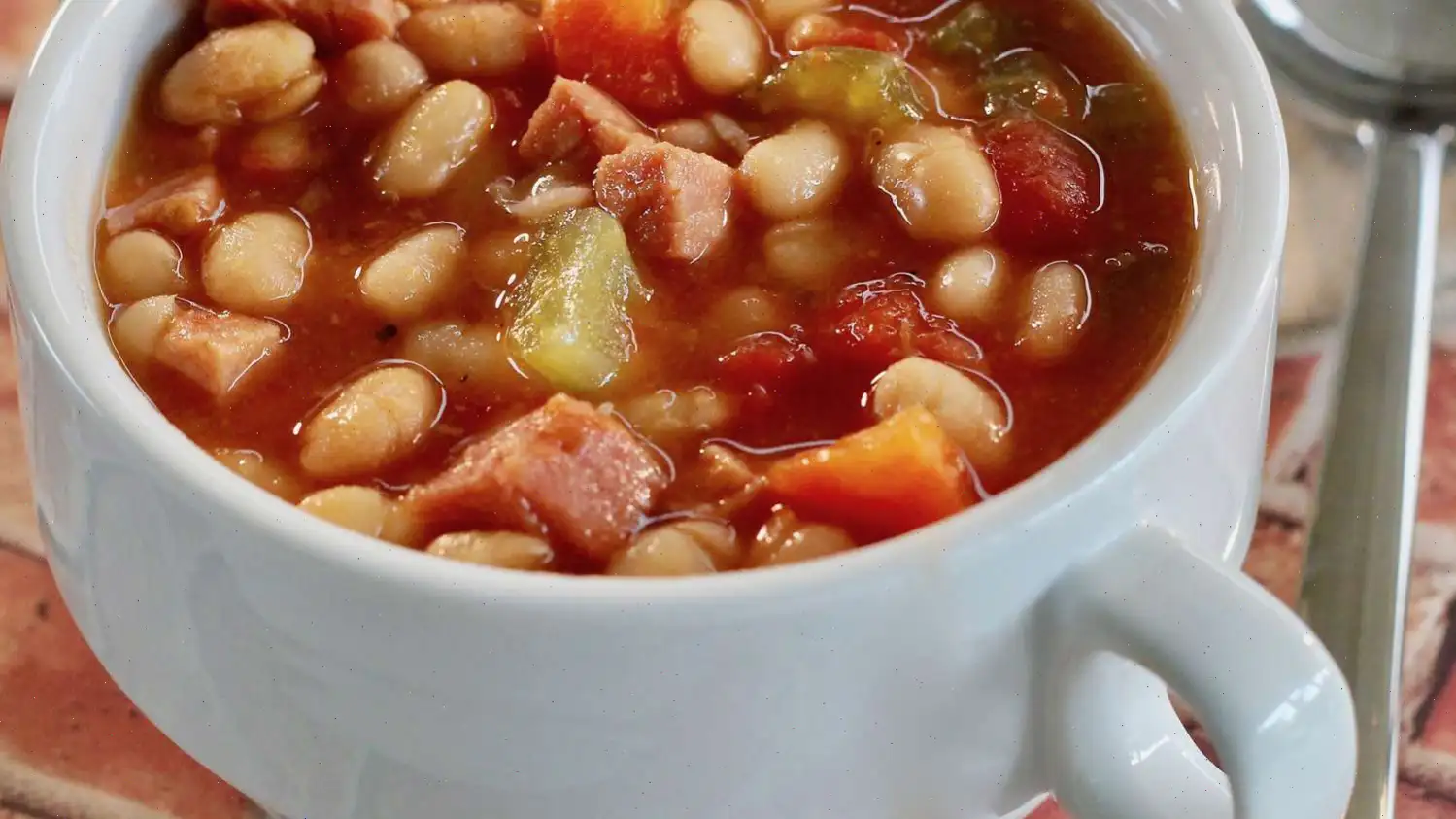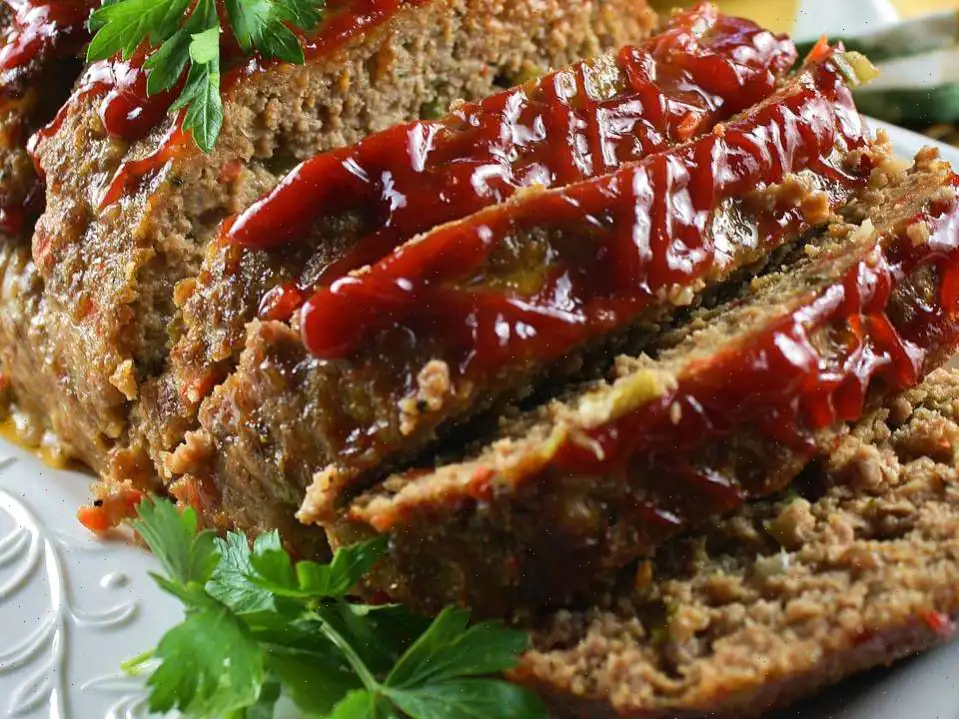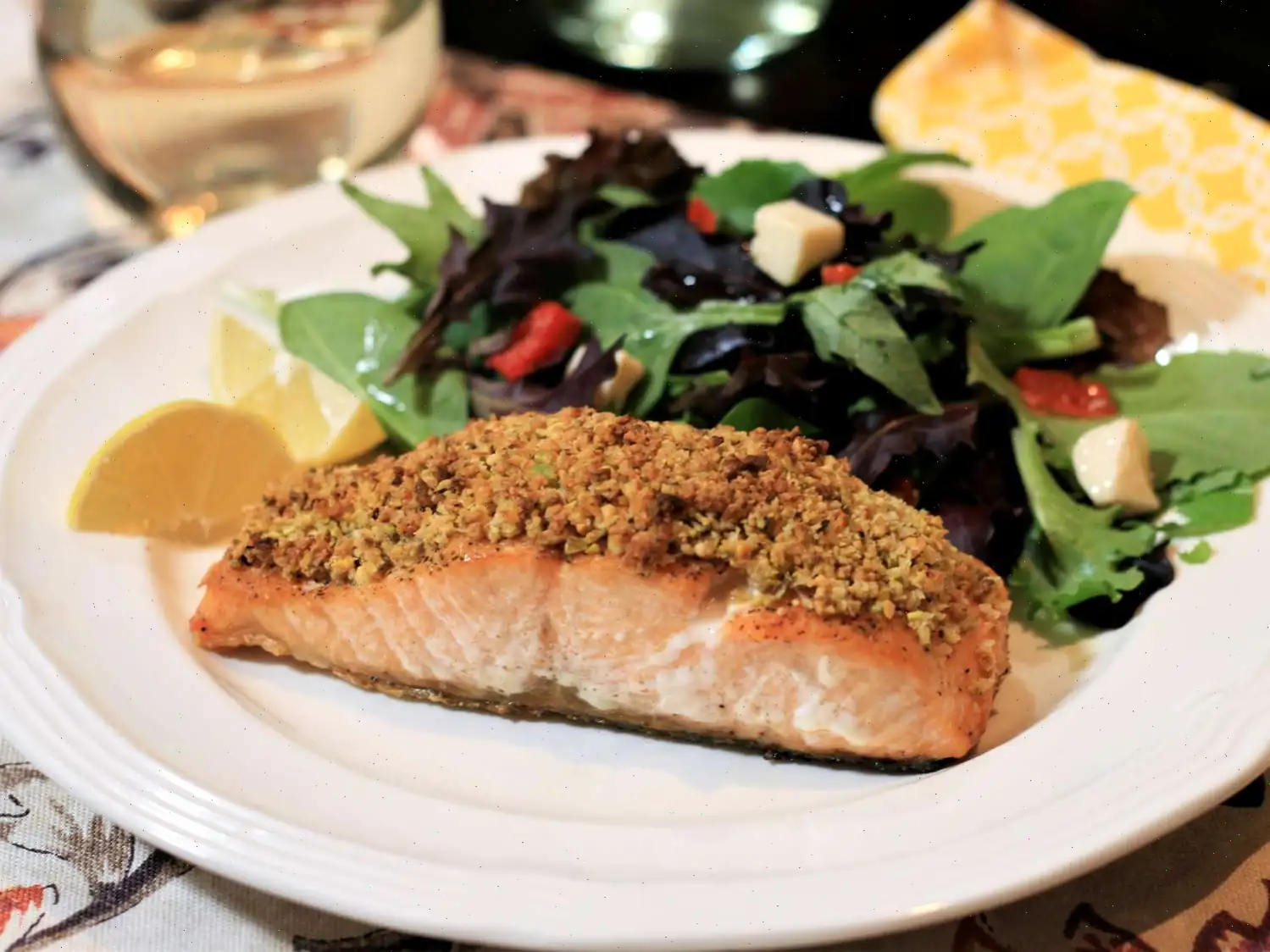
Roscoe's Korean Fried Chicken Recipe
Servings: 6
This recipe combines crispy fried chicken with a savory and spicy Korean-inspired gochujang sauce. Perfect for a savory snack or a main dish, this dish will impress with its crunchy texture and bold flavors.
Ingredients
Chicken
- 12 mixed wingette or drummette chicken wings
- 6 chicken legs
- 2 tablespoons ginger
- 2 tablespoons garlic
- 1/2 teaspoon salt
- 1/4 teaspoon freshly ground black pepper
- 1 cup water
Dredge
- 1 cup all-purpose flour
- 1/2 cup potato starch
- 1/2 cup cornstarch
- 1 cup wheat dextrin (such as EverCrisp Breader and Batter Boost)
- 1 quart vegetable oil for frying (or as needed)
- Salt and freshly ground black pepper to taste
Sauce
- 2 teaspoons sesame oil
- 2 teaspoons grated garlic
- 1 teaspoon grated fresh ginger
- 1/4 cup brown sugar
- 4 tablespoons gochujang (Korean hot pepper paste)
- 2 teaspoons white vinegar
- 1/2 cup water
- 1 teaspoon toasted sesame seeds (optional for garnish)
- 1 tablespoon chopped peanuts (optional for garnish)
Directions
Step 1: Prepare the chicken. Place a wire rack inside a rimmed baking sheet. In a large bowl, toss the chicken wings, chicken legs, ginger, garlic, salt, pepper, and water together. Mix well to coat the chicken.
Step 2: Prepare the dredging mixture. In another large bowl, combine the flour, potato starch, cornstarch, and wheat dextrin. Whisk until the ingredients are fully mixed. Season with salt and pepper to taste.
Step 3: Dredge the chicken. Add 1 cup of the flour mixture to the chicken bowl. Mix the chicken with the flour mixture and water to create a very thin batter. Toss and press the chicken pieces in the flour mixture until completely coated. Place the coated chicken pieces on the prepared wire rack and set aside.
Step 4: Heat the oil. In a deep fryer or large saucepan, heat vegetable oil to 325F (165C). Line a second rimmed baking sheet with paper towels and place a clean wire rack on top of the paper towels.
Step 5: Fry the chicken (first fry). Add chicken pieces to the hot oil, about 5 pieces at a time, being careful not to drop the temperature of the oil. Fry the chicken for 6 minutes, then transfer the pieces to the rack on the paper towel-lined baking sheet to drain. Repeat with the remaining chicken pieces.
Step 6: Fry the chicken (second fry). Increase the oil temperature to 350F (175C) and allow the oil to boil continuously. Carefully add the first batch of cooked chicken back into the oil and fry for an additional 5 minutes, or until crispy and fully cooked. Transfer to a plate lined with paper towels to drain. Repeat with the second batch of chicken pieces.
Step 7: Make the sauce. In a small saucepan, heat sesame oil over medium-low heat. Add the grated garlic, grated ginger, brown sugar, gochujang, white vinegar, and 1/2 cup water. Cook and stir continuously until the sugar has melted and the sauce is smooth, about 5 minutes.
Step 8: Coat the chicken. Drizzle the prepared sauce over the twice-fried chicken pieces. Garnish with sesame seeds and chopped peanuts, if desired.
Serve hot and enjoy!
Nutrition Facts (per serving)
- Calories: 750
- Total Fat: 41g (52% DV)
- Saturated Fat: 8g (40% DV)
- Cholesterol: 104mg (35% DV)
- Sodium: 1137mg (49% DV)
- Total Carbohydrate: 70g (25% DV)
- Dietary Fiber: 3g (9% DV)
- Total Sugars: 18g
- Protein: 26g (52% DV)
- Vitamin C: 14mg (16% DV)
- Calcium: 100mg (8% DV)
- Iron: 3mg (18% DV)
- Potassium: 497mg (11% DV)
Note: Percent Daily Values are based on a 2,000 calorie diet. Your daily values may vary depending on your calorie needs.
The Story Behind Roscoe's Korean Fried Chicken
Korean fried chicken, known for its extraordinary crispiness and flavorful sauces, has a history that stretches back to the post-Korean War era. With American-style fried chicken introduced during the occupation period, Korean chefs adapted the technique, adding double frying and local seasonings. Roscoes version takes inspiration from these traditional methods, combining a light, airy batter with a bold gochujang-based sauce, making it a modern interpretation of a classic favorite.
Regional Variations and Unique Characteristics
While Korean fried chicken is popular nationwide, regional differences are notable. In Seoul, its often served in casual bars called hofs with beer, emphasizing spicy-sweet sauces. In Busan, the style tends to favor a lighter, less sugary glaze to highlight the chickens natural flavor. Roscoes recipe mirrors the Seoul approach with a rich, sticky sauce, yet the twice-fried method ensures a crisp texture reminiscent of Busans preference, creating a balanced fusion of regional traits.
Distinguishing Korean Fried Chicken from Similar Dishes
Unlike American fried chicken, which is usually thickly battered and heavily seasoned before frying, Korean fried chicken uses a thin, often double-coated batter to achieve a crunch that lasts even after saucing. The inclusion of gochujang, sesame oil, and a touch of sugar gives it a unique sweet-spicy profile that sets it apart from Chinese-style fried chicken, which leans toward soy-based or lightly spiced flavors. The twice-frying technique is the hallmark that creates its signature delicate crunch.
Typical Serving Occasions
Korean fried chicken is commonly served in casual dining settings, bars, and street food markets. Its often accompanied by pickled radishes, cold beer, or rice, creating a sociable, relaxed dining experience. At Roscoes, it is presented as a shareable platter, ideal for gatherings, parties, or family dinners, reflecting its communal nature in Korean food culture.
Interesting Facts and Culinary Trivia
- The double frying technique originated as a way to keep chicken crispy even when coated with sauce, a solution to the problem of soggy fried chicken in humid climates.
- Gochujang, the Korean chili paste used in the sauce, is fermented, giving the dish a complex umami flavor beyond simple spiciness.
- In Korea, fried chicken consumption peaks on Thursdays, known as Chicken Day, a quirky tradition celebrated with takeout and gatherings.
- Adding ingredients like toasted sesame seeds and peanuts, as in Roscoes recipe, is a modern twist that adds both texture and flavor contrast, enhancing the sensory experience.
- The combination of garlic, ginger, and brown sugar in the sauce balances heat, sweetness, and aroma, creating a multi-dimensional taste that is both addictive and memorable.
You can listen to this recipe in AI audio format. Simply click the play button below to listen to the content in a format that suits you best. It’s a great way to absorb information on the go!


